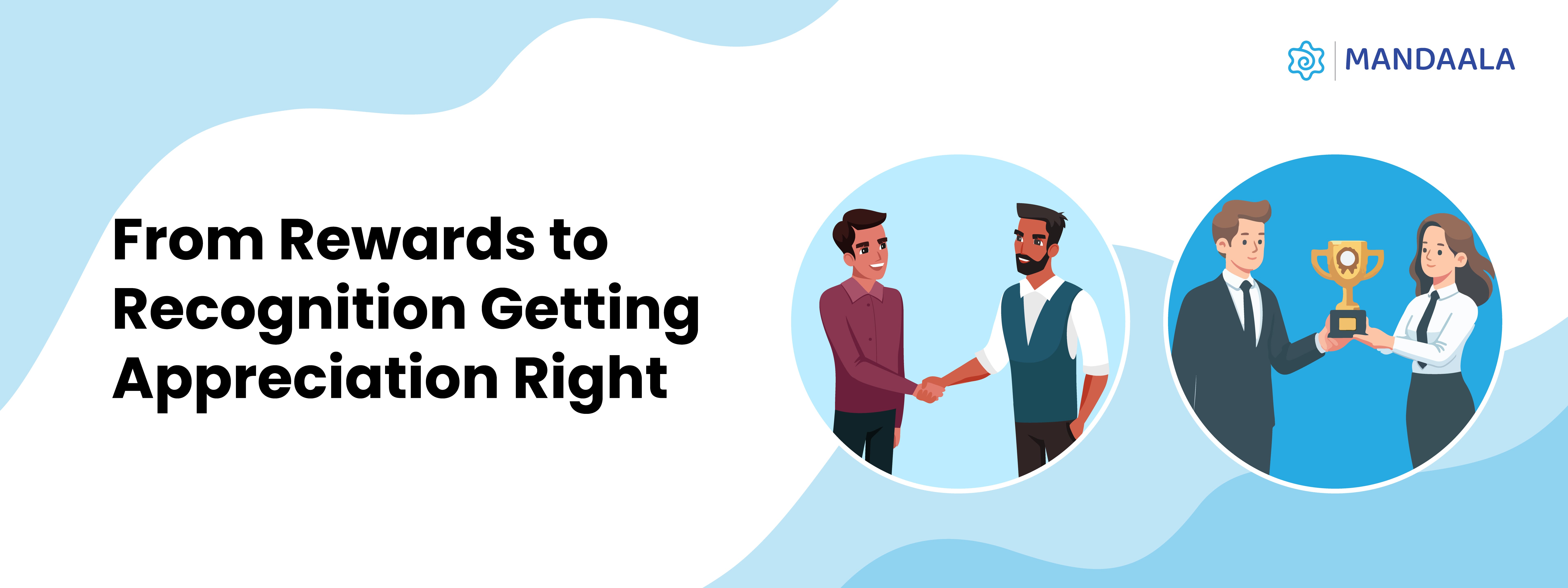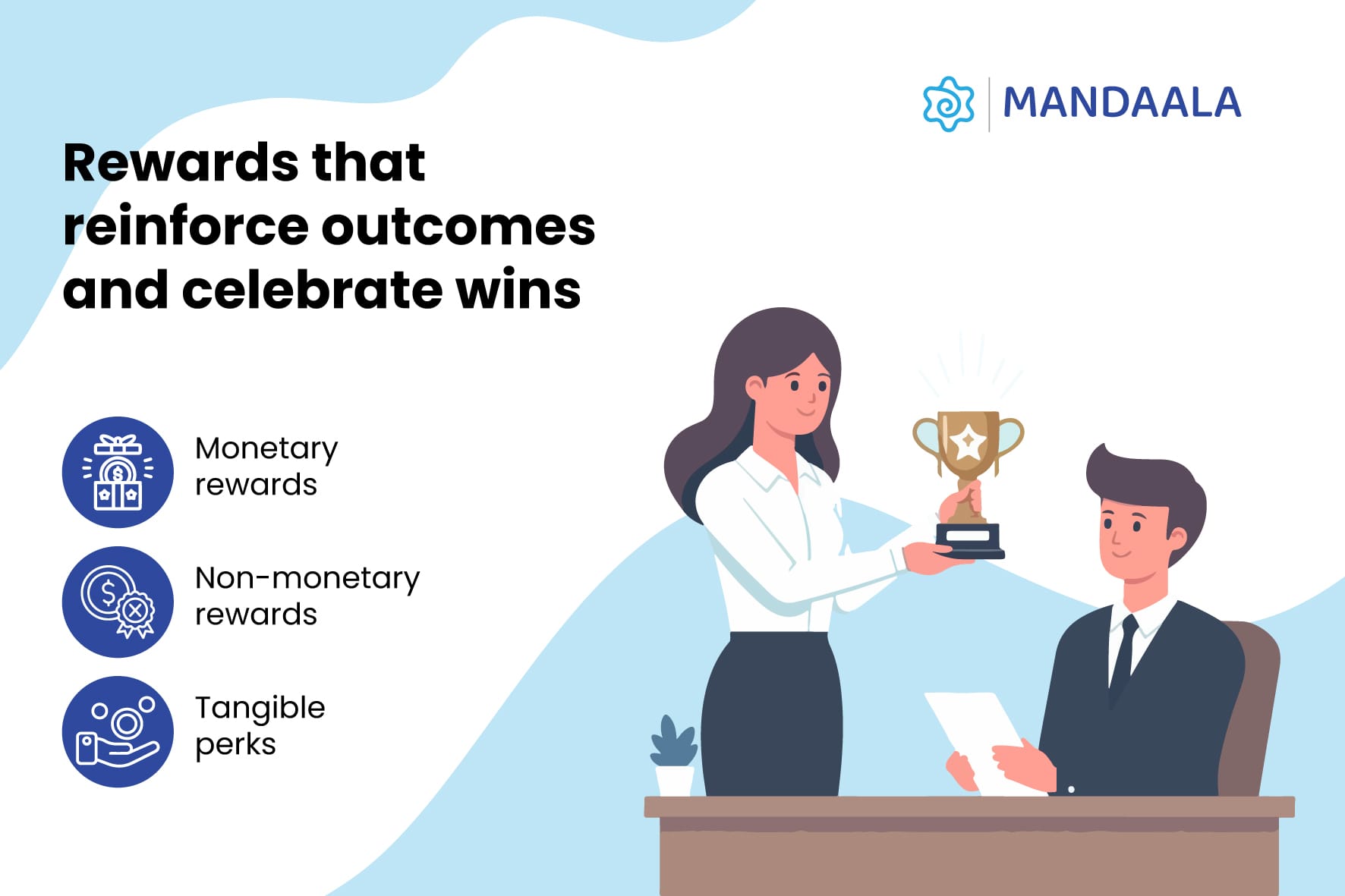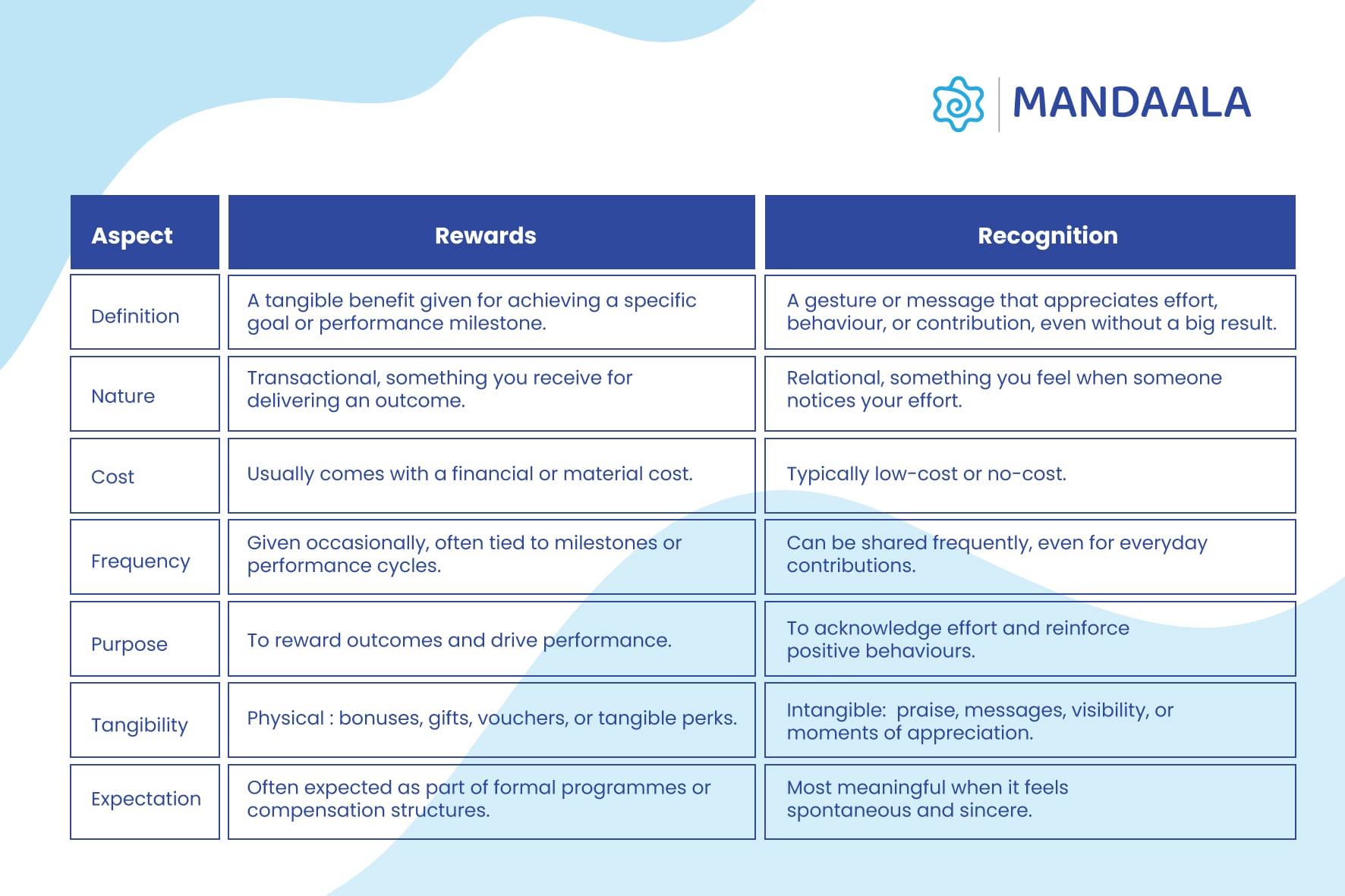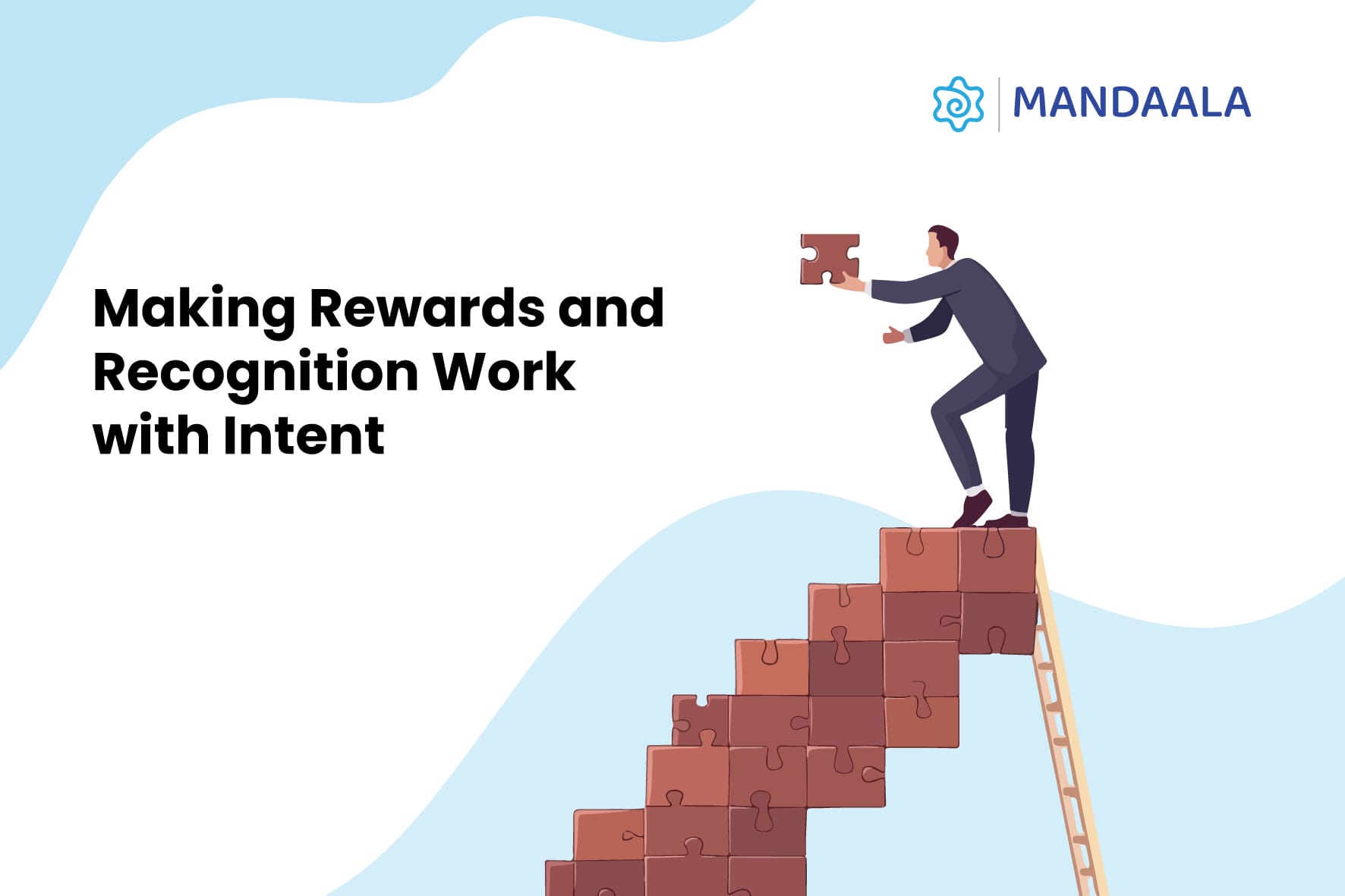Employee Rewards vs Recognition : What’s the Difference ?

Have you ever mixed up rewards and recognition? It happens all the time. On the surface, they sound similar, but in practice they mean very different things. Rewards are the tangible perks, bonuses, vouchers, maybe even a weekend getaway. Recognition is more personal; it’s the thank-you, the shout-out, the moment someone feels seen. The real difference between rewards and recognition lies in how they impact people. And once you get the balance right, rewards vs recognition can become one of the strongest tools to boost engagement and culture in your workplace.
What are Employee Rewards?

Think of rewards as the “something you give” when someone achieves a goal or delivers great results. They’re tangible, often planned, and usually tied to performance. Rewards answer the question: “What do I get for this?”
Monetary rewards : salary hikes, cash bonuses, or gift vouchers.
Non-monetary rewards : extra time off, flexible hours, or professional development opportunities.
Tangible perks : gadgets, merchandise, or experiences like travel packages.
What is Employee Recognition?

Recognition, on the other hand, is the “moment you feel seen.” It’s about calling out effort, behaviour, or contribution in a way that makes someone feel appreciated. Recognition doesn’t always come with a gift, often, it’s the words, the timing, and the sincerity that matter most.
Personal and meaningful: unique effort highlighted through a handwritten note, manager’s thank-you, or peer mention.
Timely and specific: recognition given right after a task, in a team meeting, or via a quick message.
Emotional connection: appreciation that builds pride through peer nominations, public posts, or cultural rituals.
Recognition works best when you want to boost morale, strengthen culture, and show people that their contributions matter beyond results.
Rewards vs Recognition: Key Differences
So far, we’ve looked at what rewards are, and what recognition looks like. But the real clarity comes when you place them side by side. Here’s a quick comparison to show how they differ across intent, impact, and usage:

Understanding the difference helps you decide where each one fits. Use rewards to reinforce performance. Use recognition to strengthen culture. Together, they create a workplace where appreciation feels both real and well-timed.
Examples of Rewards vs Recognition
Understanding the difference is easier when you see where each one fits. Rewards usually follow outcomes. Recognition often highlights behaviours. Both shape how people feel about their work.
Rewards Examples
- Performance bonus for exceeding quarterly targets.
- Extra paid time off after completing a big project.
- Gift card for hitting a sales milestone.
Recognition Examples
- A designer is appreciated during a team meeting for mentoring new joiners during a busy sprint.
- A senior leader sends a personal message thanking someone for staying calm during a client crisis.
- An employee is nominated by a colleague on the internal portal for consistently offering support across teams.
Why Rewards and Recognition Are Important
Rewards and recognition matter, not just as feel-good gestures, but as core drivers of how people perform, grow, and stay. When used together, they create lasting impact across teams and culture.
1. Boosts employee engagement :
In the recognition vs rewards conversation, one clear takeaway is this, consistent appreciation keeps people emotionally invested. Whether it's a public thank-you or a well-chosen reward, feeling valued drives deeper involvement at work.
2. Motivates performance and productivity :
Rewards push people towards clear, measurable goals. Recognition sustains the behaviour and mindset that gets them there. When both are in place, they support not just output, but the effort behind it.
3. Improves retention and loyalty :
The difference between rewards and recognition becomes obvious when you look at why people stay. Rewards affirm the outcome. Recognition affirms the person. A system that includes both builds a stronger reason to stay.
4. Encourages personal growth and pride :
Recognition often captures things rewards miss, leadership, teamwork, creative thinking. When these qualities are noticed, it builds confidence and encourages employees to grow beyond their job description.
5. Creates a positive company culture :
A culture that balances rewards and recognition doesn't just celebrate achievement, it normalises appreciation. Over time, this shapes how people treat one another and how they feel about being part of the organisation.
Best Practices for Building Effective Rewards & Recognition Programs

Good appreciation doesn't just happen, it needs structure. These best practices can help turn rewards and recognition into something employees actually remember and trust.
Align with company values and goals
Appreciation shouldn’t be random. Reward the outcomes that move business forward, and recognise the behaviours that reflect what your company stands for. That way, every gesture reinforces the culture you’re trying to build.
Be timely and specific
Recognition works best when it’s shared close to the moment it’s earned. Rewards lose impact when they arrive too late. Whether it’s a thank-you or a gift, context and timing decide how meaningful it feels.
Ensure fairness and inclusivity
When only top performers get bonuses or only extroverts get praised, the system feels biased. Design programmes where different teams, work styles, and contributions have a chance to be seen and valued.
Combine both strategies
Use rewards to celebrate delivery, and recognition to highlight the effort behind it. One drives results, the other builds belonging, and together, they create a system where people feel appreciated in more than one way.
Include remote/hybrid employees
People shouldn’t miss out just because they’re not in the room. Deliver rewards to their doorstep, and use digital channels to make recognition visible across the team, no matter where they work from.
Conclusion: Making Rewards and Recognition Work in Practice
Recognition and rewards aren’t interchangeable, but they aren’t in competition either. When used well, they work together to create a culture where both effort and outcomes are valued. The key is to be intentional: know what you’re appreciating, why you’re doing it, and how it lands. For employees, it’s not about the scale of the gesture, it’s about the meaning behind it. And when that meaning is clear, appreciation becomes something people don’t just expect, but remember.
Mandaala is the solution arm of PrintStop India.